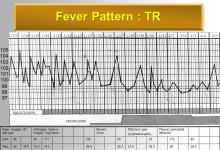Hemochromatosis Reviewed Save

Powell et al have published in Lancet a review of hemochromatosis; its genetics, pathogenesis, clinical manifestations and management. Hemochromatosis is an iron-storage disease, with genetic heterogeneity, that results in low production of the hepcidin and an increase in intestinal absorption and deposition of excess iron in parenchymal cells, ultimately leading to tissue damage and organ failure.
Hemochromatosis is the most common inherited genetic disorder as nearly 10% of northern Europeans have this mutation, but only 1/200 will be homozygous. While there are multiple mutations that can lead to the clinical syndrome, the most common mutation is that in the HFE gene leading to the p.Cys282Tyr substitution.
Four types of disease have been described including the Type 1 HFE-hemochromatosis (HFE-related), which is most common. The non-HFE-associated forms are far less common and are seen worldwide, including Type 2: Hemochromatosis (non-HFE-related, juvenile forms); Type 3: Mutated transferrin receptor 2; and Type 4: Mutated ferroportin 1 gene, SLC11A3.
Among 2802 patients with clinically diagnosed hemochromatosis, 80.6% have p.Cys282Tyr homozygosity. Compound C82Y/His63Asp heterozygosity was reported in 5•3% of cases, and 19•4% of cases were not related to HFE.
Clinically, males are preferentially affected. The classic triad association of hepatic cirrhosis, diabetes, and skin pigmentation is seldom seen in most with hemochromatosis. Alcohol can lead to significant progression and even cirrhosis.
Hemochromatosis frequently manifests fatigue, arthropathy and osteoporosis, affecting function rather than survival. Chronic fatigue is the most common symptom. Arthropathy can develop early in men (< age 30 years) and usually after menopause in women. Chondrocalcinosis or damage to the second and third metacarpophalangeal joints and to the proximal interphalangeal joints are the more frequent and typical localisations, but all joints might be damaged, including ankles, hips, and knee and may result in joint replacement, most commonly hips. Osteoporosis occurs in 25 to 34% and peripheral or vertebral fractures are not uncommon with hemochromatosis.
The diagnosis may be suspected in patients with lethargy, elevated hepatic enzymes or ferritin and can be defined by HFE genetic testing. An early diagnosis can lead to early presymptomatic therapy and a normal life expectancy. Once diagnosed, further testing to assess the presence of diabetes, liver damage or hypogonadism should be considered.
Phlebotomy remains the mainstay of therapy, but alternative therapies are the subject of current research. The goal is to keep hemoglobin levels above 11–12 g/dL and the serum ferritin concentration between 50 and 100 μg/L.










If you are a health practitioner, you may Login/Register to comment.
Due to the nature of these comment forums, only health practitioners are allowed to comment at this time.